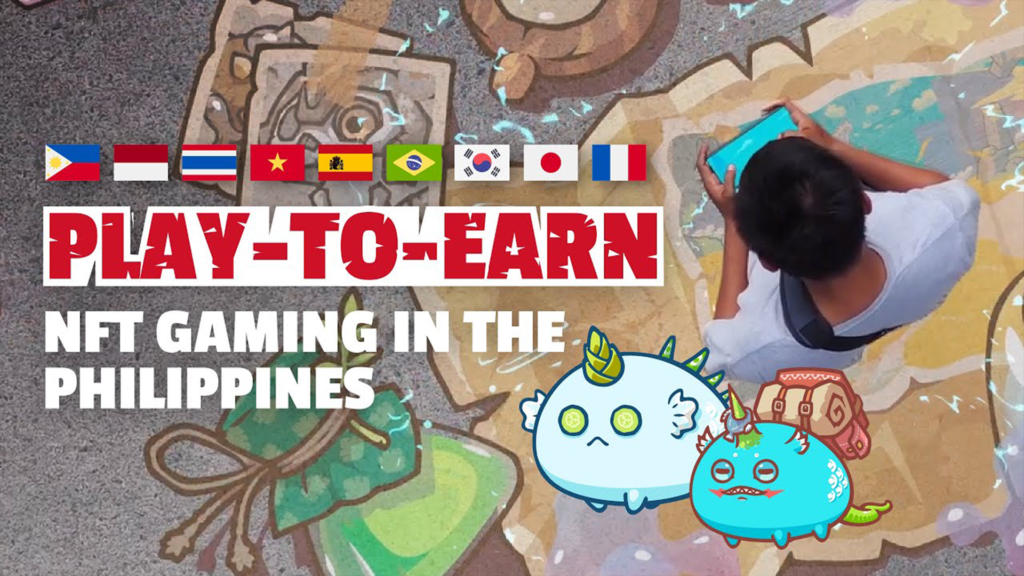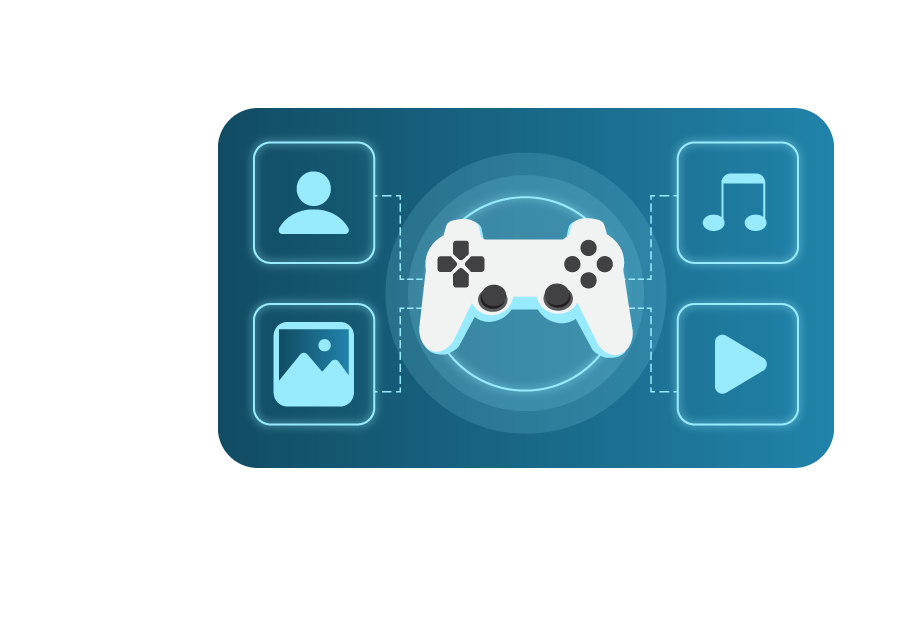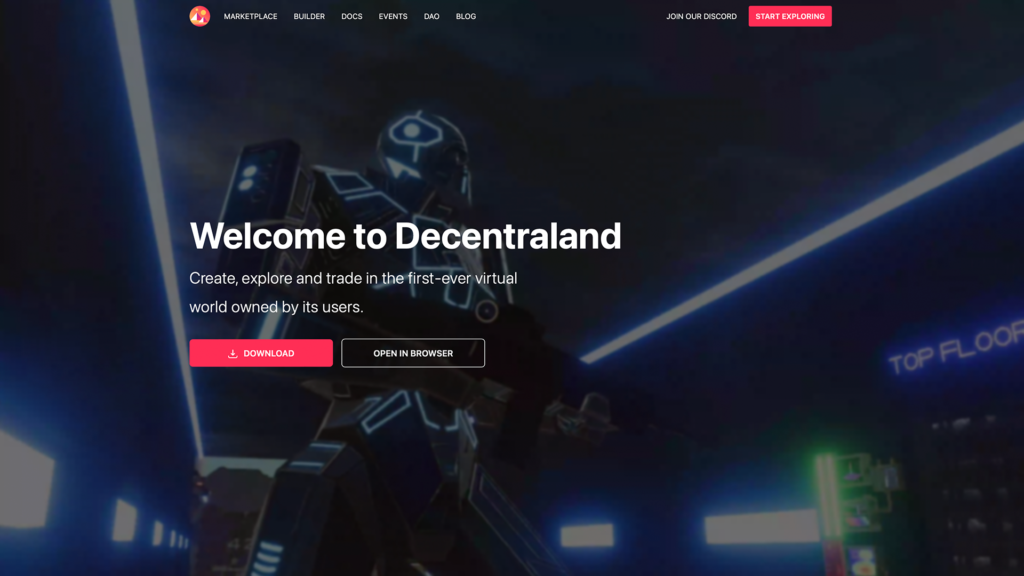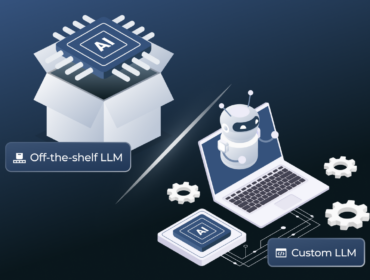Non-fungible tokens have come a long way — from simple pixelated JPEGs to desirable art objects and utility NFTs. Then along came summer 2022, and we got another plot twist. The newly adopted ERC-4907 standard marks the beginning of the era of rentable NFTs.
After explosive growth in 2021, the NFT market curve has somewhat flattened, but things look very promising for 2022. By May 1, buyers had already spent more than $37 billion on NFT marketplaces, compared to $40 billion total in 2021.
Will NFT rentals drive another market activity spike, or are they just a blip on the radar? Let’s find out.
Our article explains what rentable NFTs are, how they work, and why users and game developers will benefit from the introduction of the ERC-4907 standard. We’ll also talk about the current use cases in gaming and share our thoughts on the future of NFT rentals.
What are rentable NFTs?
In essence, a rentable NFT is a token that its owner can temporarily lend to another user, without giving up ownership rights. When the designated rental period is over, the NFT will be automatically returned to the owner’s crypto wallet.
The Ethereum standard that set these rules for the blockchain is ERC-4907, and it came into effect on June 28, 2022.
It might strike you as strange that such a simple concept hadn’t been implemented earlier. Indeed, there were ways to rent NFTs before the standard came into effect, but it was a complicated and even risky business, which we will discuss later in the article.
Note: although technically any NFT can be rented, this article focuses on gaming, so we’ll be talking about utility NFTs. Renting conventional NFTs which are essentially digital artworks is a very narrow use case that offers limited benefits.
It’s the idea of leasing the utility attached to the token that makes rentable NFTs so attractive.
Let’s get a better grasp on the inner mechanics of NFT rentals.
How do rentable NFTs work?
The adoption of ERC-4907 makes renting NFTs safe and convenient for both parties involved. Let’s explain with an example.
Player A bought some land plots as NFTs in Decentraland — a popular Ethereum-based 3D platform. If they were lucky enough to make that purchase in 2017, they probably got their hands on some land at the starting price of $20 a parcel.
As an aside, a Decentraland property called Fashion Street Estate was sold for $2.4 million in November 2021, making it the biggest virtual land sale to this day. Now that’s selling at the right price!
In the GameFi universe, land is a liquid commodity. You can rent it out to other parties, so they can build shopping centers or concert venues, advertise their products, or hold virtual events. Yes, things like Metaverse Fashion Week and Sotheby’s in Decentraland are now a reality.
So, when Player B wants to rent a land plot for their purposes, all they need to do is:
- find the right NFT through a listing;
- agree on the terms of rental;
- enter into a smart contract.
The corresponding NFT will be in Player B‘s possession for the lease period, while Player A will retain ownership of the asset and will receive the agreed fee for renting it out.
Player B can use the NFT and whatever utility it represents.
Depending on the contract, Player A can even make profits on the transactions their NFTs generate while rented.
When the lease term is over, Player B will no longer have access to the NFT.
The new ERC-4907 standard for rentable NFTs makes all of this possible by introducing these two features:
- It defines the role of “user”, separating it from that of “owner”. This distinction is absolutely crucial for the blockchain to differentiate between original and temporary ownership rights. Users can’t sell NFTs they rent.
- It creates an “expires” variable. This enables a secure and automated process of returning the NFT to its rightful owner. The blockchain will take care of it at the end of the lease period.
In addition to that, the new standard reduces the load on the blockchain’s resources. Instead of submitting two transactions to indicate the change in the rental status, you now only need one. Based on the data in the initial transaction, the blockchain automatically withdraws the user’s rights when the rental period is up.
Thanks to ERC-4907, renting NFTs today is a breeze, but it hasn’t always been that way.
Renting NFTs before ERC-4907
Unicsoft is no stranger when it comes to making Web3 games. The Unicsoft team was involved in a project where renting gaming assets as NFTs was a part of the experience. We ended up solving the challenge, but it took some tinkering with smart contracts. Why? Because the tools were limited at the time.
Before ERC-4907, developers had to choose between these two options for NFT rentals:
- Collateral. To rent the NFT they found on the marketplace the borrower had to pawn a higher valued NFT of their own. On top of that, they’d often have to pay the platform for their operating expenses. This option was risky for the lender because they could in theory lose their NFT if the renter decided to keep it or sell it to a third party.
- Collateral-free. In this scenario, the borrower would receive a copy of the original NFT, enveloped in a smart contract. It would have all the features of the original, including its utility. The smart contract would burn the wrapped NFT copy at the end of the rental period. While this method was less risky for both the lender and the renter, it was technically more complex and required more time to implement.
The concept of NFT rentals was so attractive that even with such limited blockchain tools, a phenomenon called scholarship programs emerged.
Scholarships

Play-to-Earn: NFT Gaming in the Philippines is a documentary that tells the story of a local community who earned their living by playing Axie Infinity. As with many other P2E (play-to-earn) games, users need to make an upfront investment to start playing — in this case, buy their Axie characters.
But since many of the Filipino players are from low-income households, this created an entry barrier. That’s when a group of local entrepreneurs came up with the idea of scholarships.
Here’s how it worked:
- experienced players bred Axies and lent them to newbies as NFTs — for free
- those new scholars would play the game and pay a cut of their earnings to their sponsors
This way, the sponsors made passive income, and the scholars got a job that paid $300-400 a week — while the minimum wage in the Philippines runs between $5-$10 a day.
The model was so lucrative and sustainable, it gave rise to guilds. Guilds offer NFT rental services for multiple P2E games for a commission fee. One of the largest guilds, Avocado DAO, has over 10,000 players. The project recently secured $18 million in Series A funding, hoping to significantly expand its user base and services.
Are you starting to see the big picture? Even before the ERC-4907 standard streamlined the process of renting NFTs, the market was booming. The concept lends itself perfectly to being used in the realm of non-fungibles.

Why rentable NFTs make sense
The concept of renting came to the blockchain from the real world. One party wants something the other party has, but can’t afford — or doesn’t need — to own it so instead pays money for using it. The wheel of economy keeps spinning, and everybody wins in the end.
Just like in the real world, people love the idea of living off the dividends of their investments. That’s the main idea behind rentable NFTs: it’s a source of passive income.
NFTs, however, offer some nice perks when compared to real estate and physical objects in general:
- No wear and tear. When you lend your exclusive Fabergé egg or a 1956 Mercedes 300 SL to a stranger you met on the internet, risks are involved. Your prized possession might get scratched or worse. Non-fungibles are digital assets, so you can’t damage them. Even if you rent a token out a thousand times, it’ll always be as good as new. That’s why you don’t need to consider any maintenance, either.
- A simple, straightforward process. Thanks to the way blockchain is built and to smart contracts in particular, assets are easy to track, and the rental contract is just a few lines of code. No lawyers or notaries — everything’s transparent and risk-free.
When something is that easily available and secure, it’s bound to become a hit. Let’s explore the benefits for each party.
What play-to-earn gamers stand to gain with NFT rentals
Initially, the speculative NFT market was built around the concept of flipping — buying tokens and selling them when the price went up. As a consequence, there are probably millions of NFTs just sitting in crypto wallets, creating zero additional value. Owners are either waiting for the best moment to sell or are keeping their tokens for sentimental reasons.
Now, gamers who own utility NFTs they don’t plan on selling can make a buck or two from renting them out. And those who need the functions and value of those NFTs can put them to good use without paying a hefty price.
Let’s sum up the benefits of rentable NFTs for the users of play-to-earn games:
- Renters can use the utility of an NFT for a fraction of the cost of ownership. This works both for individual gamers and for businesses/brands that want to invest in virtual assets for marketing purposes.
- Lenders can earn passive income from their NFTs. It’s an extra revenue stream that may prove to be more stable than trading NFTs in a volatile market.
Ok, but what about the game creators? There’s a silver lining for them too.
How NFT rentals can drive profits for game developers
Rentable NFTs have every chance to reinvigorate GameFi and P2E in particular.
Here’s how:
- They lower the entry barrier and engage more users by allowing them to temporarily own NFTs they wouldn’t be able to afford otherwise.
- They can give a new boost to your game’s economy, resulting in more transactions and, consequently, higher profits for you, its creators.
- The ERC-4907 standard eliminates the need for collateral and bolsters security for NFT rental deals, making this market more appealing for businesses.
- Considered by many to be the next big thing on the market, the inclusion of rentable NFTs can put your game on the map for the NFT crowd, where trends are everything.
Are you intrigued and fascinated by the possibilities of NFT rentals yet? Remember: Unicsoft can help build your very own NFT-based game. Here’s a short primer on how to plan a P2E game development budget.
We’re almost done! Before we call it a day, let’s see where NFT rentals really shine in gaming.
Gaming use cases for rentable NFTs
The rentable NFT market hasn’t been fully shaped yet, and there’s room for experimentation. We’ll briefly describe use cases that are already successful, but we’re absolutely certain there’ll be more to come soon.
Rentable gaming items
NFT rentals are in their element here, giving gamers access to their desired avatars, skins, weapons, or other perks at acceptable prices. Gaming trends are fleeting, so there’s often no sense in long-term NFT investments. Players can rent NFTs directly from each other or through guilds.
Guilds
The ability to rent and lend NFTs is at the core of the guilds concept. Projects like Yield Guild Games, Avocado DAO, Metaguild, and others command audiences ranging from 1,000 to 10,000 players, attracting massive capital. Guilds are businesses built on a hobby, and the model is extremely popular and profitable, so they’re here to stay.
Digital land assets in the Metaverse

As we already mentioned, land plots in Decentraland or Sandbox can get quite expensive. The fluctuating prices don’t follow real estate patterns, so it’s a questionable investment. Renting metaverse land as NFTs is a great way for larger brands to create 3D spaces and hold virtual events for promoting their business. Not everyone can afford to build a permanent Gucci Town on Roblox.
What happens next?
The NFT market attracts new customers every day. The number of people who actively buy and sell NFTs has been steadily increasing since 2020. This report puts the number of unique addresses that participated in NFT sales in Q1 2022 at 950,000 — a major uptick from 627,000 in Q4 2021. A large percentage of these transactions involve gaming NFTs, and their number will be growing thanks to the lower cost of NFT rentals.
The ERC-4097 standard will facilitate market growth: it streamlines the NFT rental experience, adds more security for lenders, and makes life easier for game developers.
Rentable NFTs mean more fun for players and more business for game creators. An increasing number of games will surely be adding this functionality in the near future.
If you want to grow your user base and tap into this revenue stream, Unicsoft can help by consulting or implementing NFT rentals into your gaming product.
We can also develop a P2E game from scratch, using the best available technology.





![Rentable NFTs in Gaming (ERC-4907): Should We Be Excited? What’s the EU Artificial Intelligence Act and How to Comply? [Webinar]](https://unicsoft.com/wp-content/uploads/2024/03/Cover_1140_v1.1-370x280.png)

